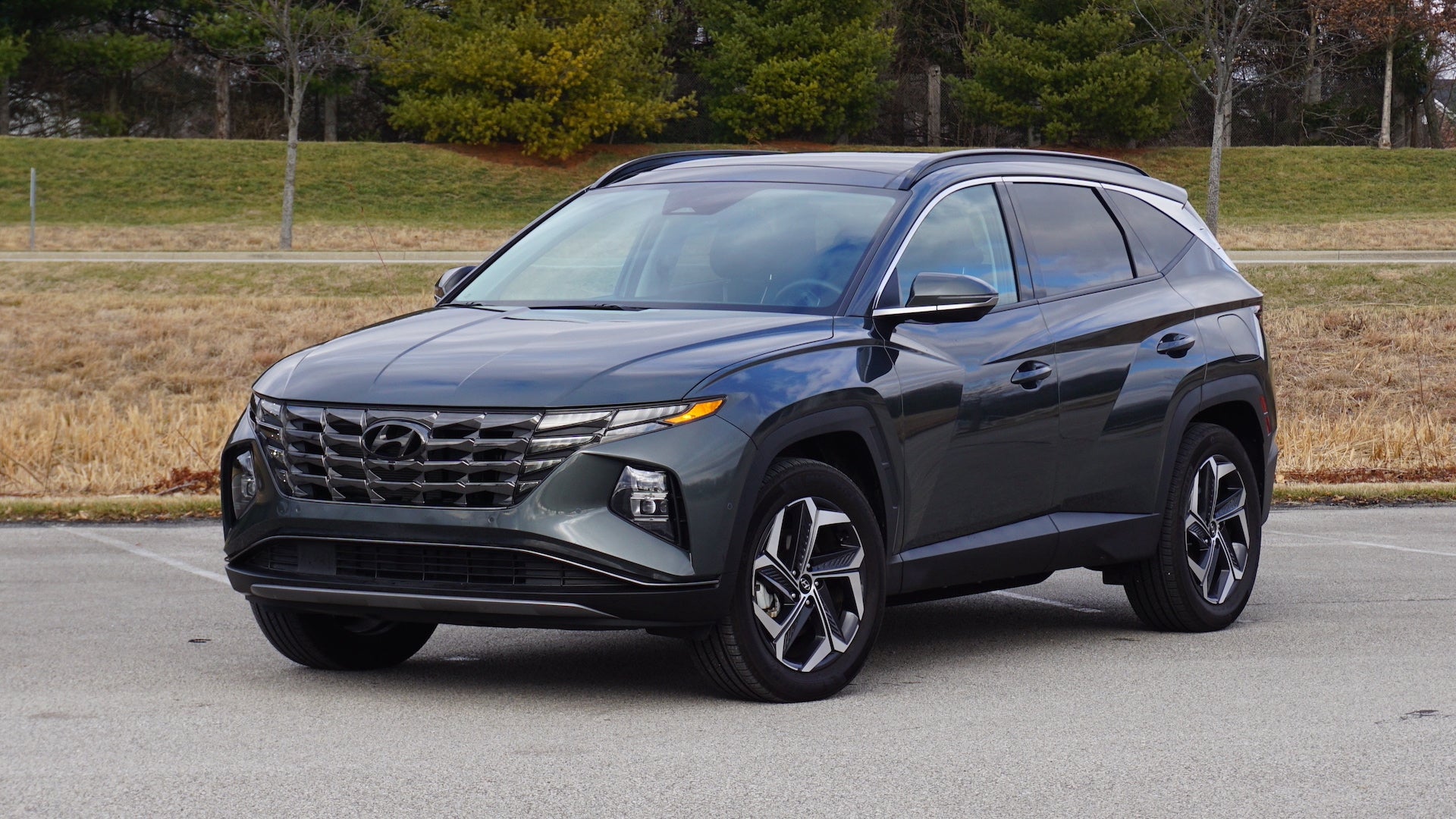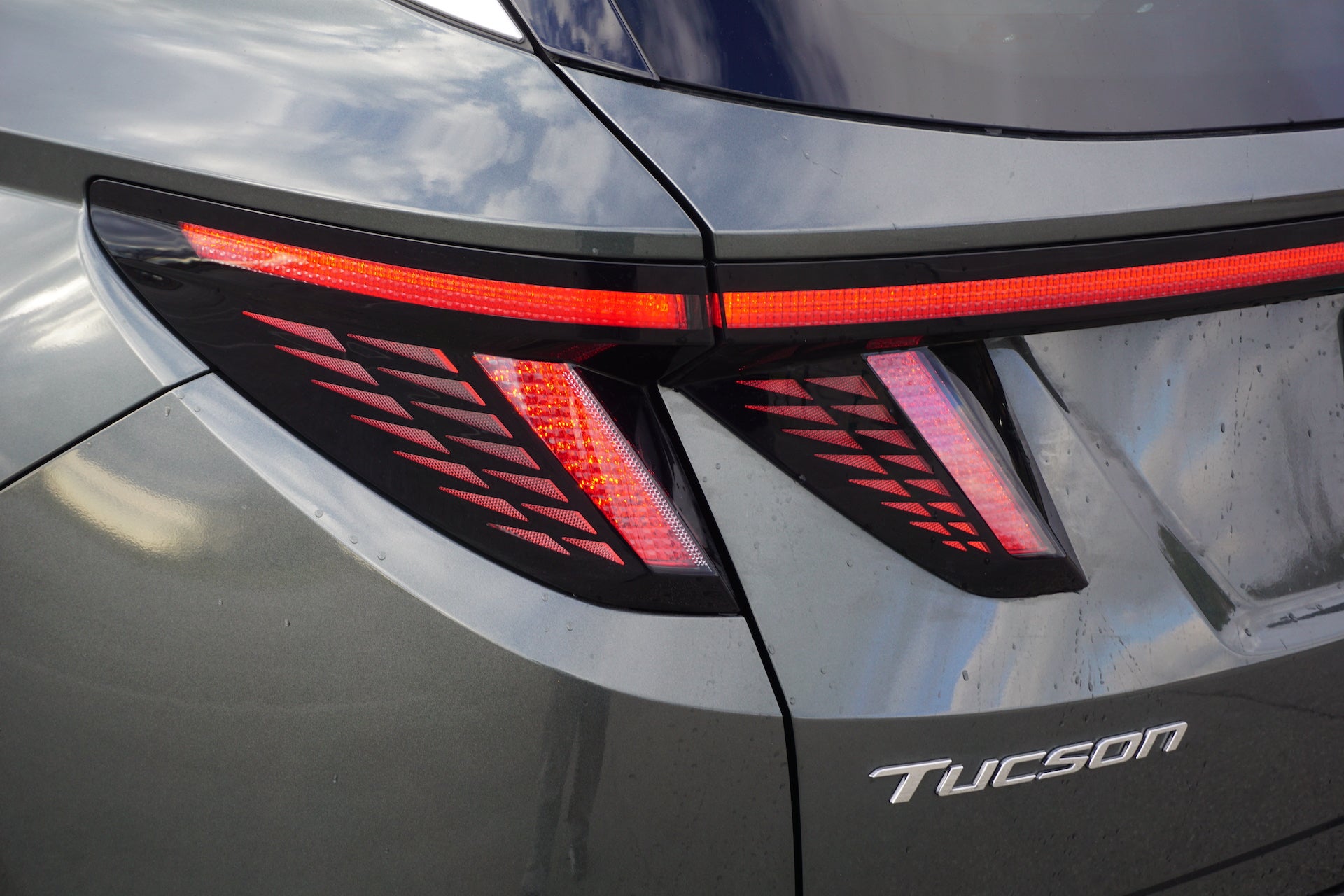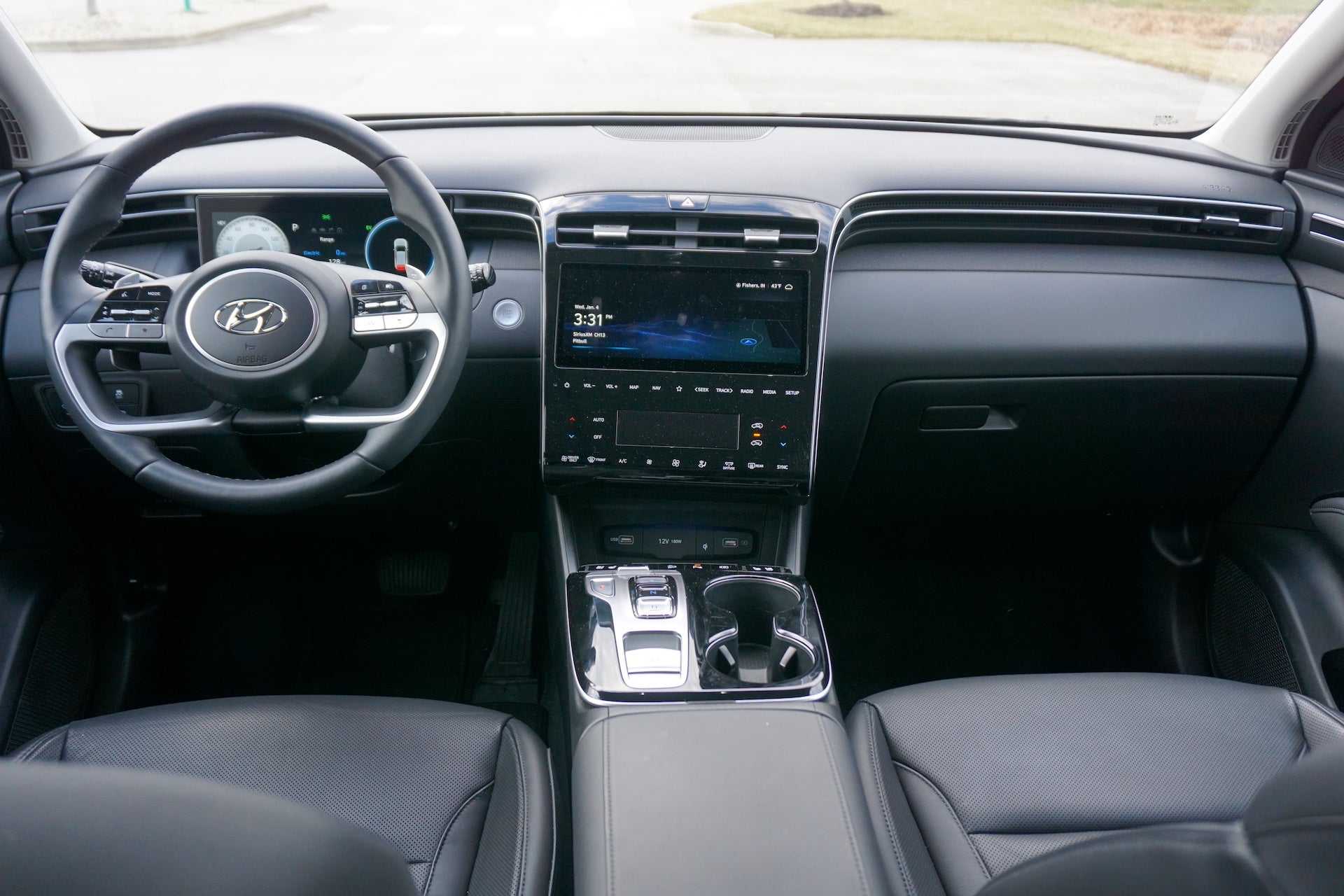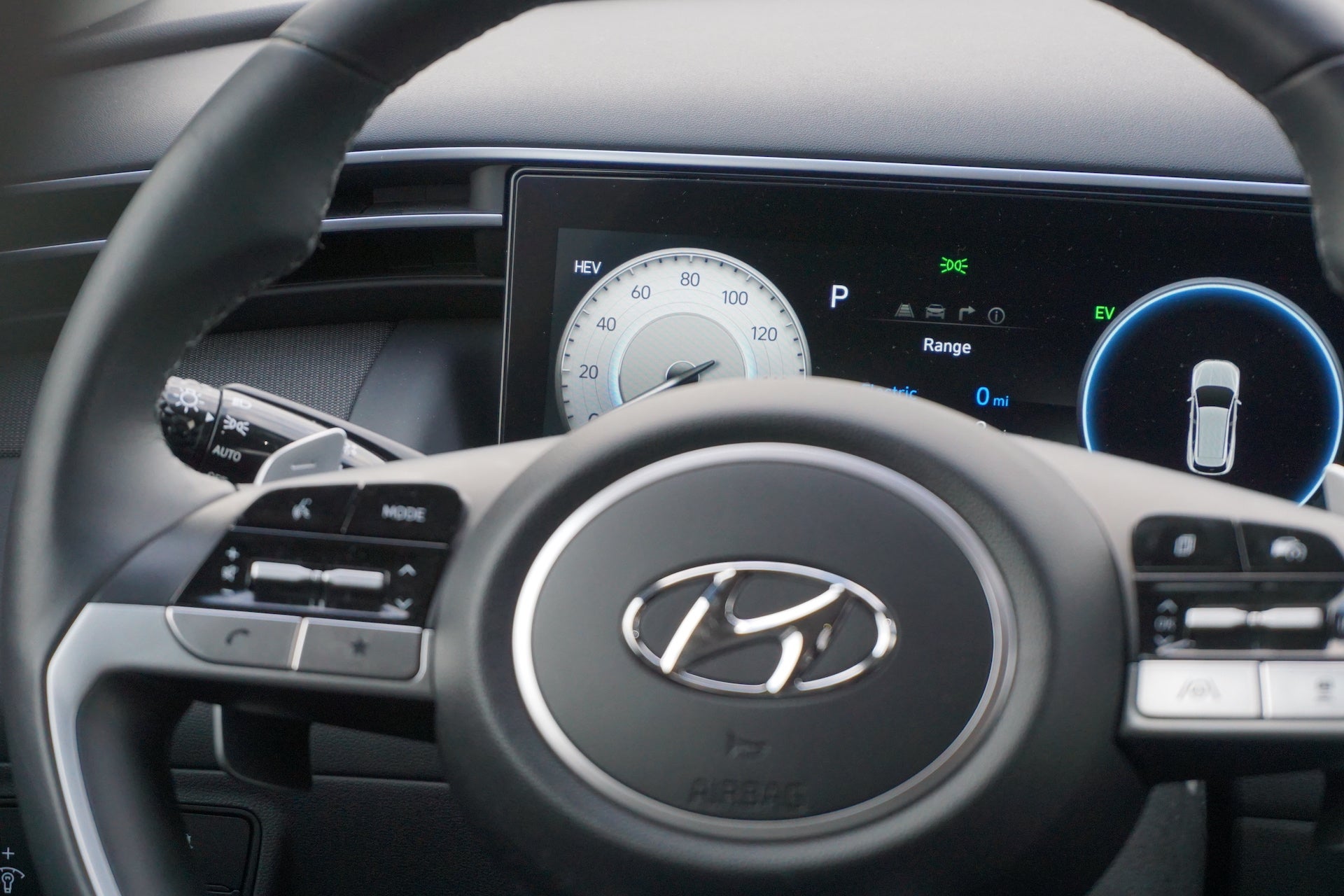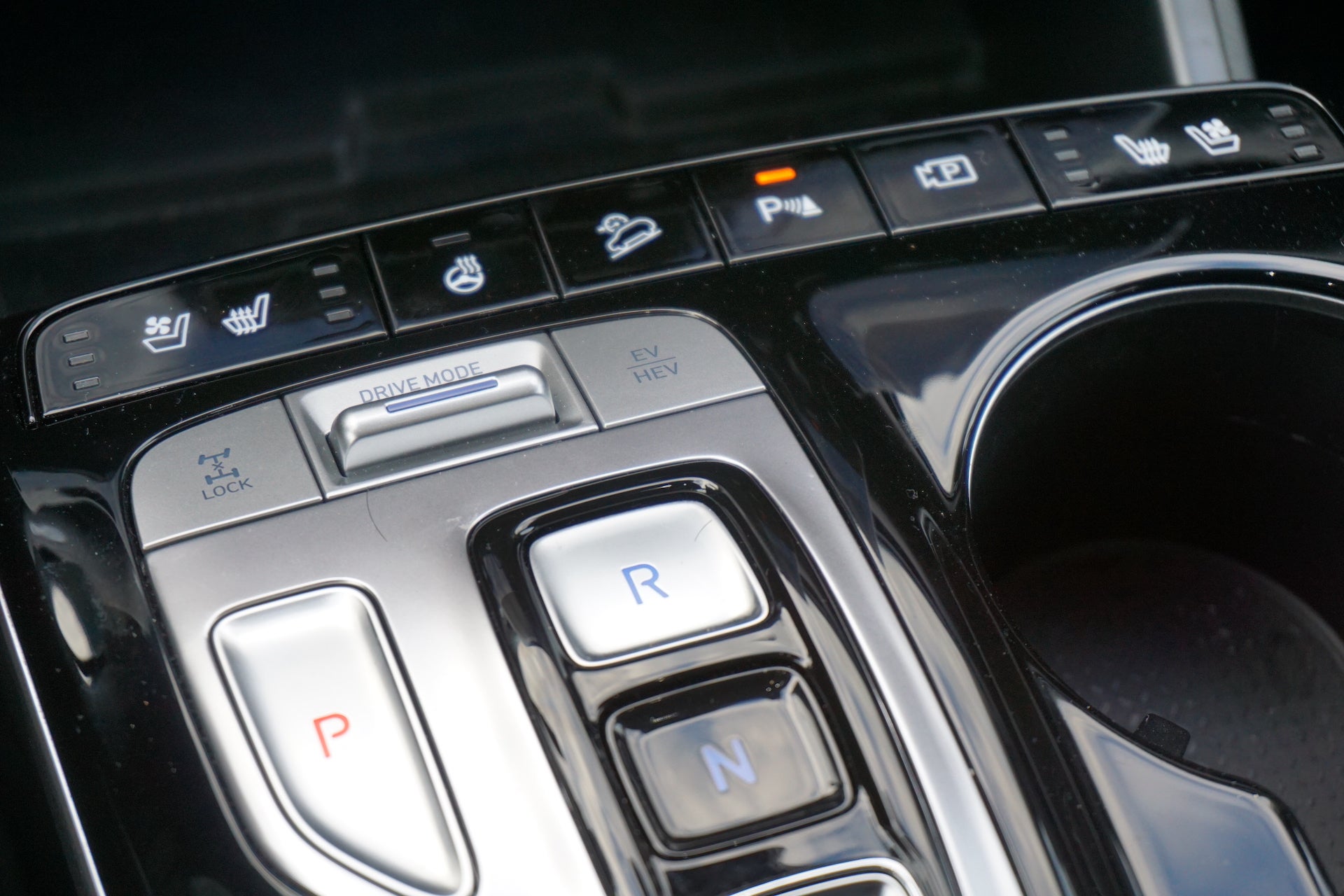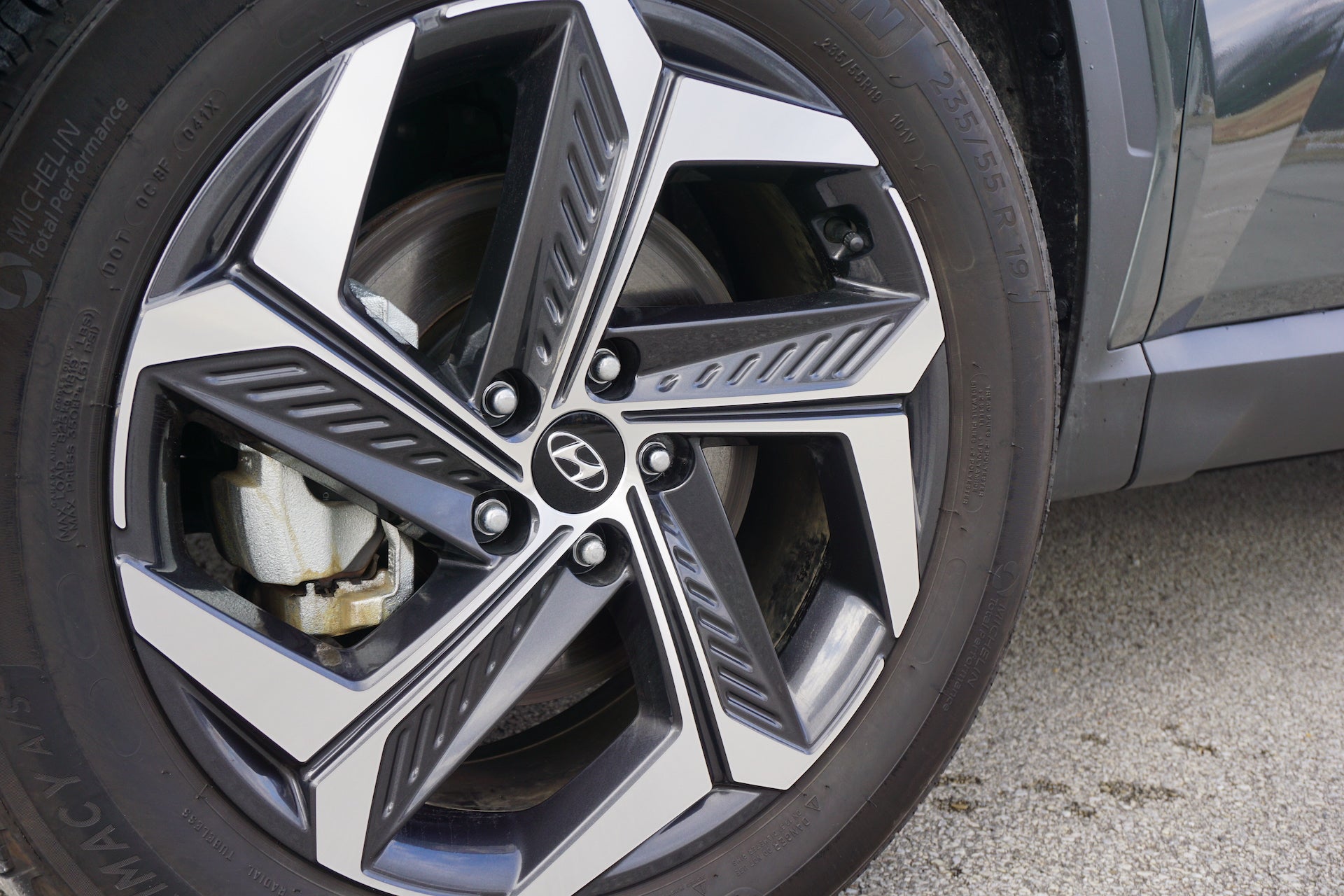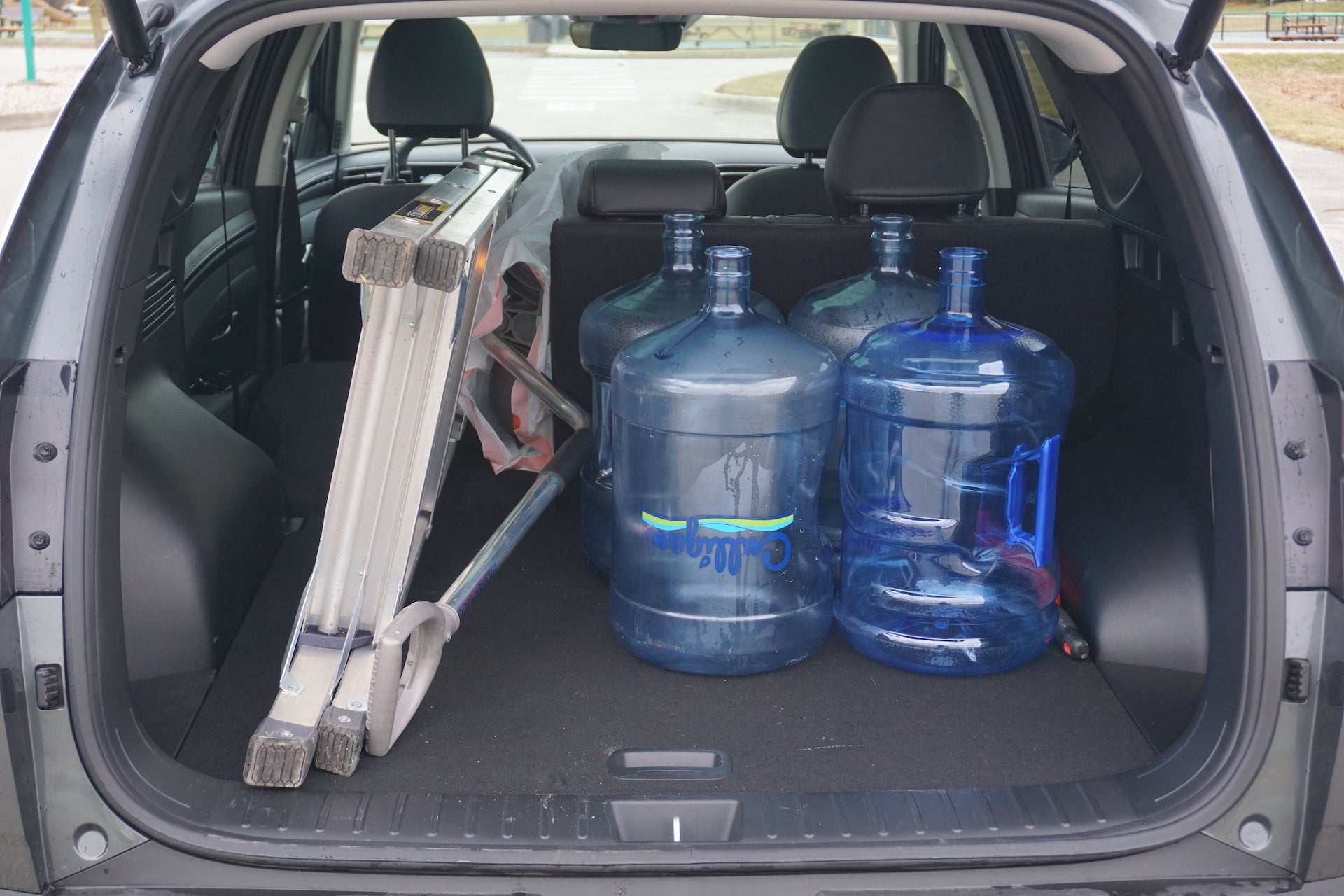For years, non-luxury crossovers have been blurring the lines that separate them from fancier, more expensive, and oftentimes less-well-equipped competitors, with affordable family haulers from foreign and domestic automakers raising the bar incredibly when it comes to bang for the buck. Few have done this more than Hyundai and the 2022 Hyundai Tucson Plug-in Hybrid serves as the perfect example.
Equipped with all the bells and whistles you could want, a sharp-looking exterior, and a fuel-sipping drivetrain, the range-topping Tucson offers a more complete package than most luxury crossovers have in recent years—or even today.

The competition in this segment is strong, however, and the Tucson—plug-in or not—can’t exactly run away as the class leader. It must fight the likes of Honda, Toyota, and even its corporate sibling, Kia, for market share.
2022 Hyundai Tucson PHEV AWD Review Specs
The Basics
Like most Hyundai vehicles recently, the Tucson is a home run in terms of design. Its large grill with hidden LED lights is just cool, while the rest of the body features sharp edges that culminate in a distinctive taillight design. This is one stylish crossover—but it’s not overdone. Hyundai maintained a sense of balance because it is, after all, a mass-appeal crossover. But frankly, it makes its American competitors look like turds.
Jerry Perez
The exterior’s sharp design does not carry into the interior, unfortunately, where the center console reminds me of a late-’90s home stereo system. But unlike those, this one’s missing a volume knob. It’s a pity, really, because the infotainment system is quite good and easy to use, but it’s encased in an ugly console that’s best described as Fingerprint Paradise. The digital gauge cluster and driver’s infotainment screen look and work fine, as does the push-button shifter. The ergonomics of the cabin are fantastic and the button layout is superb, making the outdated design of the dashboard feel like an insult.
The plug-in hybrid Tucson, or “Tucson PHEV” as I’ll refer to it here, sits at the top of the Tucson lineup. It differentiates itself from the regular hybrid by offering more power—261 horsepower versus 226—and 33 miles of electric-only driving range. These benefits carry quite a price premium, but I’ll elaborate more on this later. A turbocharged, 1.6-liter four-cylinder engine produces 180 hp on its own, while a 66.9 kWh permanent magnet synchronous electric motor and 13.8 kWh lithium-ion battery add the remaining 81 hp to the equation. Properly equipped, it can tow up to 2,000 pounds but, of course, that cuts quite a bit into its electric-only range.
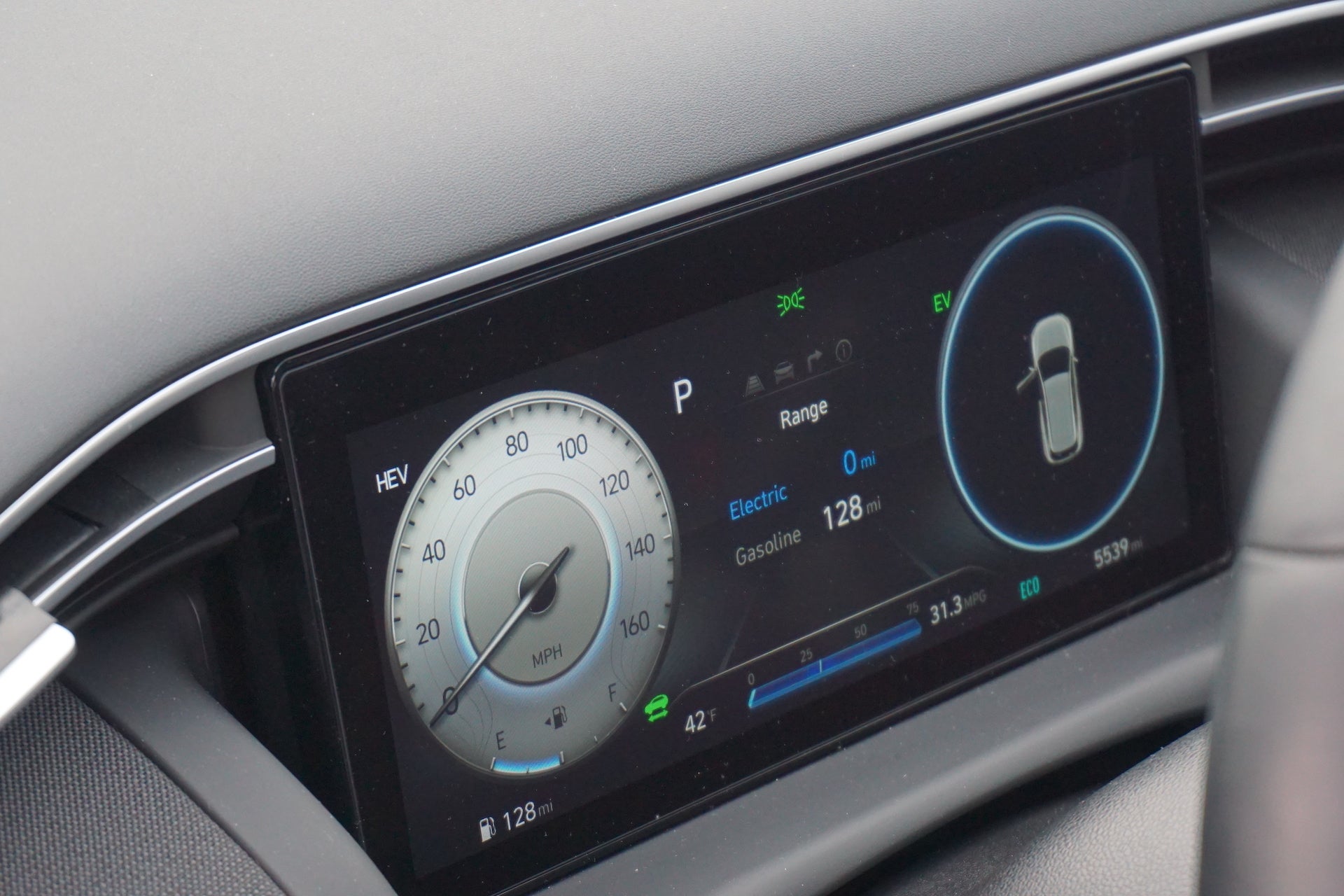
Driving the Hyundai Tucson PHEV
The plug-in Tucson is quick, comfortable, and effortless to drive. It isn’t sluggish off the line or when passing at highway speeds—it actually took me a bit by surprise how much grunt it can deliver when my right foot desired more pace. When driving around town in a civilized manner, you’ll be less likely to notice the additional horsepower and focus entirely on the ride quality.
The Tucson’s suspension (MacPherson strut with coil springs up front and multi-link in the rear) is supple and provides a cushy ride on the highway. Road imperfections are hardly noticeable above 35 mph, but drive slower than that and things start feeling pretty firm. Speed bumps around my neighborhood felt rather harsh, something which I’d attribute to the suspension’s tuning. This likely won’t be an issue to most drivers, unless they’ve got newborns in car seats or deliver hot coffee for a living.
Jerry Perez
The front seats are extremely comfortable, and in the case of my tester’s Limited trim, heated and ventilated. The second-row seat proved to be ample and comfy enough for daily duty and road trips alike. They were also heated, which was really nice for the kiddos given the single-digit weather we enjoyed during my test.
The Highs and Lows
Comfort ranks high on the Tucson PHEV’s list of priorities, if not the highest. It’s definitely right up there with efficiency. It’s not often that I find a driver’s seat to be above average in terms of comfort—especially in the $40K price range—but the Tucson’s was truly fantastic. I could spend a thousand miles on that seat and not complain about a thing.
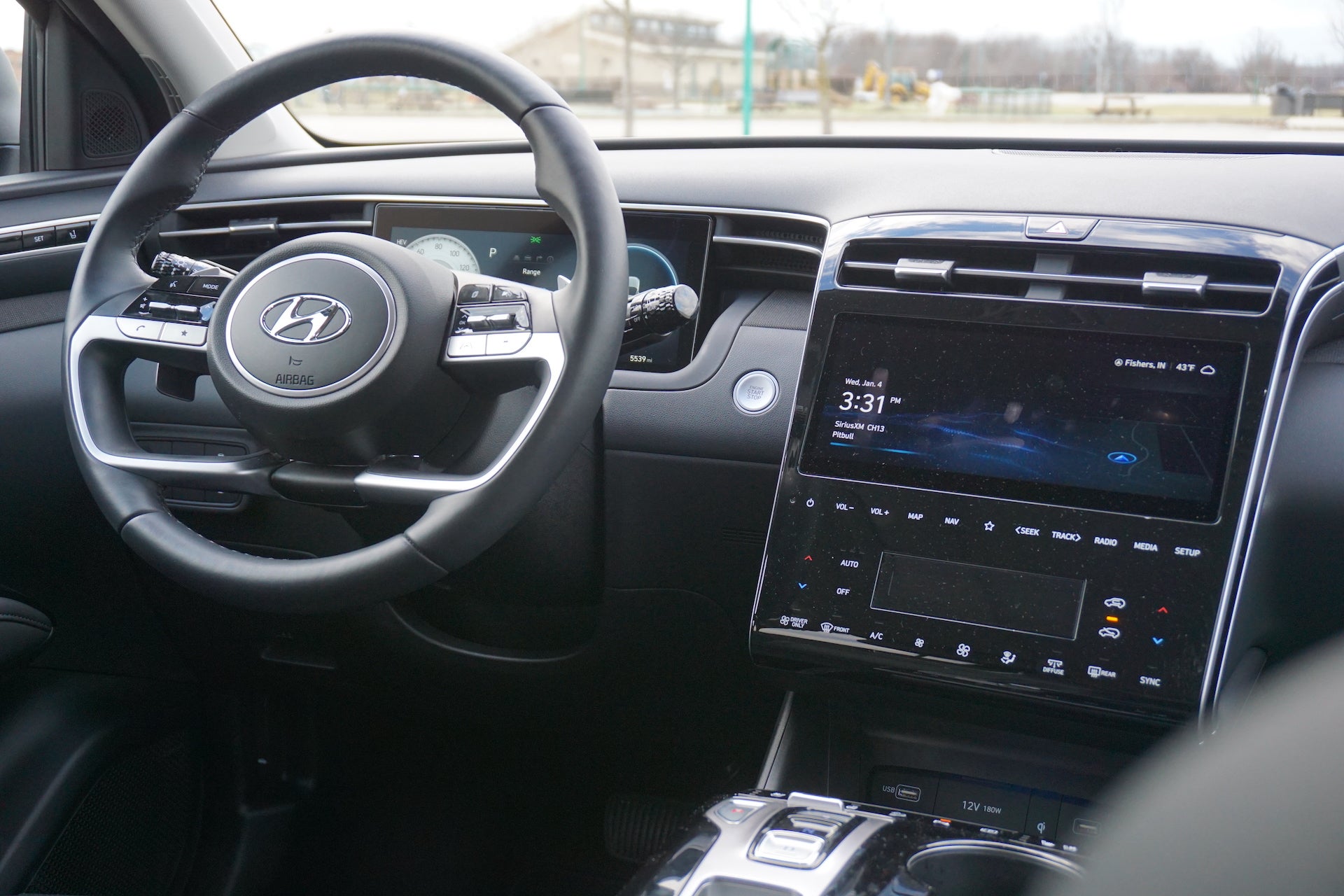
Less positively, the touch-sensitive buttons on the center console aren’t practical, and the lack of a volume knob is just awful. Likewise, several times I went to activate the power liftgate from the keyfob and it would require me to hold the button to fully open or close it. Other times, it only required me to click it once. Other times it was a mix of the two. It was the same thing with the remote start. Sometimes it worked, sometimes it didn’t. Other times it would start the car but not indicate that it did, ultimately surprising me once I actually got into the car. To have such basic operations be hit-and-miss was frustrating.
Hyundai Tucson PHEV Features, Options, and Competition
As a Limited trim, my tester was equipped with every feature offered in the Tucson range. Per the build sheet, the only option was the carpeted floor mats for $195. Luxuries like heated seats, a heated steering wheel, ventilated seats, heated rear seats, power liftgate, wireless smartphone charging, SmartPark Assist, dual 10.25-inch screens (driver and infotainment), smart cruise control, and the 360-degree view camera were standard. As were safety features like forward collision avoidance, lane-keeping assist, lane-following assist, driver attention warning, rear occupant alert, rearview camera with cross-traffic alert, blind-spot warning, and safe exit warning—the majority of which are standard on all Tucson trims.
Jerry Perez
Rivals include the Toyota RAV4 Prime, Kia Sportage PHEV, and Ford Escape PHEV. Out of the four, the Tucson PHEV is actually the most affordable, starting at $36,695 including destination. It’s followed by the Ford Escape PHEV at $39,995, then the Kia Sportage PHEV at $40,015, and lastly, the Toyota RAV4 Prime at $43,675. When it comes to electric range, the Tucson offers 33 miles, the Sportage 34, the Escape 37, and the RAV4 42. In short, the Tucson offers the lowest range but also commands the lowest price. Also, it’s worth noting that the Ford Escape PHEV is only offered with front-wheel drive.
Perhaps its biggest competition comes from within. The Tucson Hybrid Limited comes in at $4,540 less than the PHEV, while opting for the regular, non-hybrid Tucson Limited can save you a whopping $7,500.

Sustainability
As a plug-in hybrid electric vehicle, the Tucson can go longer distances than a regular hybrid without using fuel. This boosts its green credentials quite a bit, considering that, in theory, someone could complete their entire daily commute without using a drop of fuel. As long as their commute isn’t more than 16 miles each way, that is.
I did not observe precise fuel economy during my weeklong test due to abnormal weather and driving conditions. A winter storm brought sub-zero temperatures, ice, and snow to the midwest, meaning there was lots of idling to warm up the cabin ahead of each driving stint, and so forth. Regardless, even in those conditions, the Tucson PHEV was averaging north of 27 mpg combined. Per the EPA, it’s rated at 35 mpg and 80 mpge combined.

Value and Verdict
The 2022 Hyundai Tucson Limited PHEV is a phenomenal package. As a father, husband, and owner of two large dogs that think they are human children, it’s about as ideal as it gets for daily life. The fact that it’s sharp-looking and a PHEV is really just a bonus. That being said, I couldn’t justify spending nearly $5K more for the ability to drive 33 miles on battery power alone. Yes, I enjoyed the additional horsepower and what that does to the overall driving experience, but I just don’t see the value.
The main takeaway here is that there are options, and that’s a great thing. If you aren’t as concerned about price, then, by all means, go big and get the PHEV. If you are, you can still get a nearly-identical and almost just-as-fantastic Tucson Hybrid. In the end, you’ll still have a great crossover that looks sharp, is better equipped, and costs way less than the luxury guys. And that, my friends, is a win.
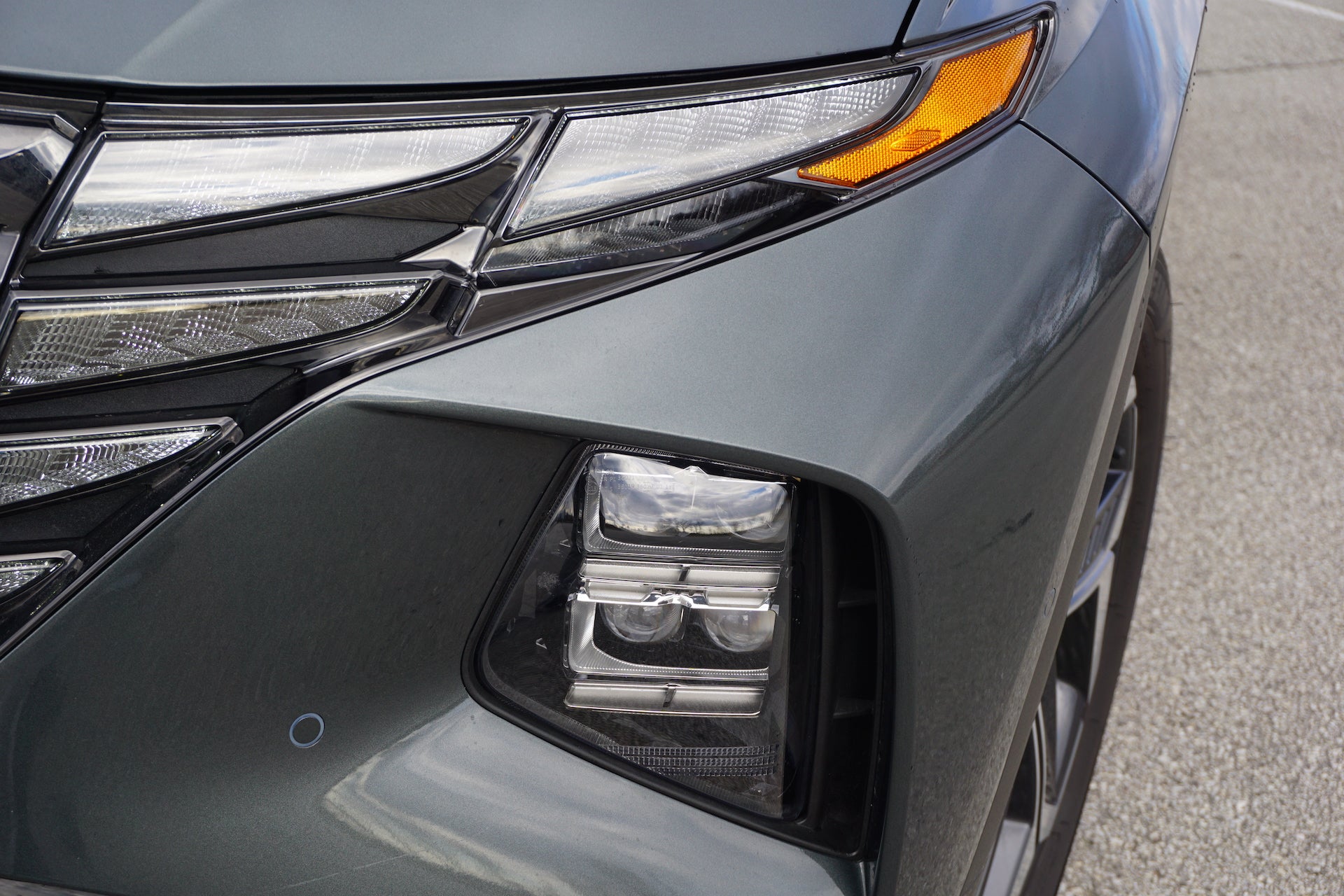
Got a question? Email the author at [email protected]
